Cabbage Bread Recipe: Bake a Delicious Loaf at Home 🍞🥬🏡
1. Introduction
Imagine the aroma of freshly baked bread permeating your kitchen, beautifully intertwined with the subtle, earthy sweetness of cabbage. You might be thinking, “Cabbage in bread?” Absolutely! This isn’t just any bread; it’s a homemade cabbage bread recipe that promises to redefine your baking adventures. It’s a delightful and unexpected twist on a classic comfort food. Perfect for morning toast with butter, creative sandwich fillings, or simply enjoying a warm slice on its own, this cabbage bread is a culinary chameleon, ready to adapt to any meal. In this article, we’ll be your guide, walking you through each step needed to create the perfect cabbage bread. We’ll ensure that every bite you take is a savory sensation, a harmonious blend of textures and subtle flavors that dance on your palate. Whether you’re a seasoned baker confidently wielding your spatula or a complete novice just beginning to explore the joys of homemade bread, this recipe is designed to be accessible and easy to follow, without compromising on the delicious outcome. So, preheat your oven, gather your ingredients, and get ready to bake a loaf that will impress your family and friends, transforming ordinary meals into extraordinary culinary experiences!
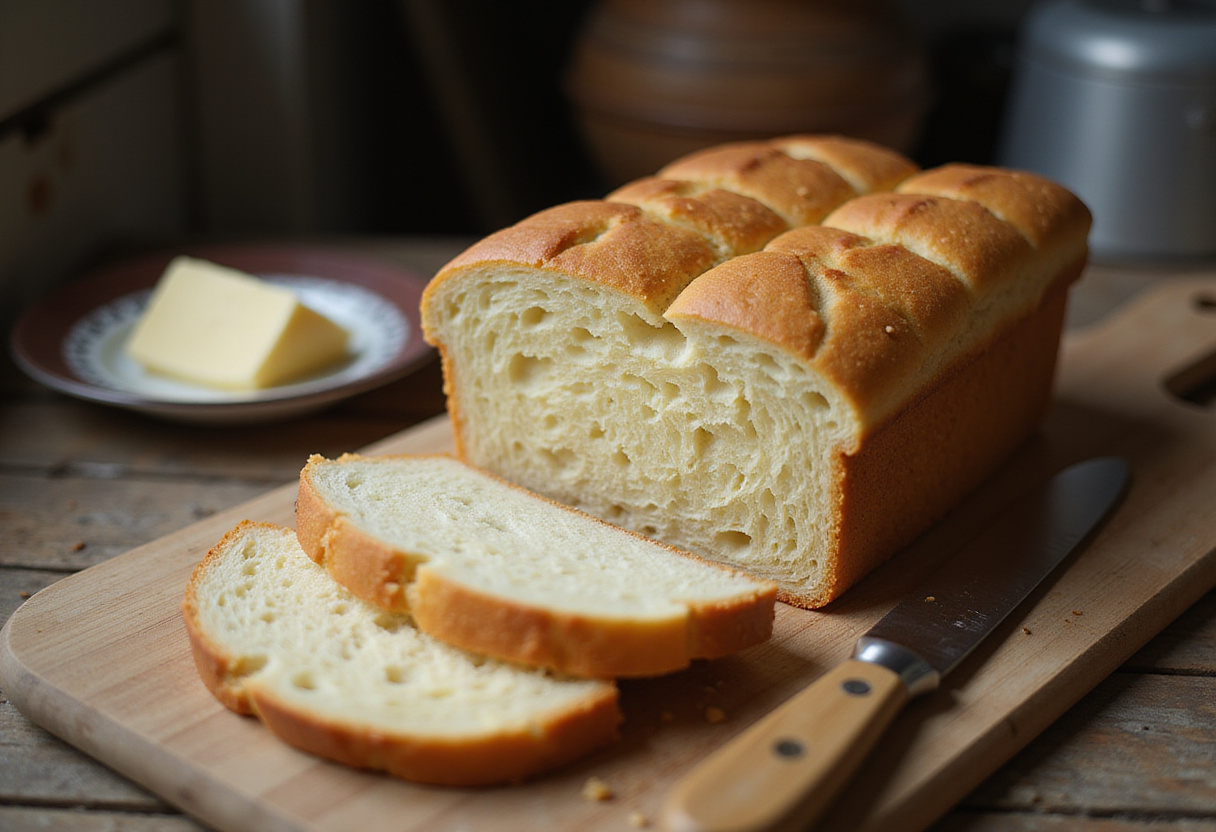
2. What is Cabbage Bread?
Cabbage bread is a truly unique and unexpectedly flavorful bread that artfully incorporates shredded cabbage directly into the dough. This clever addition not only introduces an element of surprise but also works wonders by adding moisture, a subtle sweetness, and a delightful, slightly chewy texture to the final baked product. This homemade cabbage bread isn’t a modern invention; it’s a treasured recipe that has been cultivated and adapted in numerous cultures around the world, each contributing their own regional variations and flavor profiles. The true beauty of this particular recipe lies not only in its relatively simple execution but also in the wonderful depth of flavor that the humble cabbage brings to the table. Beyond its culinary appeal, it’s also a fantastic and inventive way to sneak some extra vegetables into your daily diet, all while allowing you to savor a comforting, warm, and satisfying loaf of bread. Why not try pairing a slice with one of our dinner ideas for a complete and comforting meal?
3. Why You’ll Love This Recipe
- Simple Ingredients: Forget about complicated shopping lists! You’ll be pleased to discover that you probably already have almost all of the necessary ingredients stocked in your pantry, making this recipe perfect for a spontaneous baking session.
- Easy to Make: This recipe is exceptionally straightforward and beginner-friendly, making it perfect for bakers of all skill levels, from seasoned pros to those who are just starting their baking journey.
- Delicious Flavor: Prepare to be surprised! The subtle, almost creamy sweetness of the cabbage perfectly complements the inherent savory notes of the bread, creating a balanced and delicious flavor profile that will leave you wanting more. Looking for more ways to explore unique flavors? Check out our appetizers and snacks category.
- Versatile: From a comforting side dish accompanying your favorite meal to a creative sandwich bread that elevates your lunchtime experience, or simply enjoyed as golden-brown toast slathered with butter, this bread is incredibly versatile and adapts to any occasion.
- Unique: Prepare to impress! Amaze and delight your friends and family with this unexpected and exceptionally tasty bread that is guaranteed to spark conversation and earn you rave reviews.
4. Ingredients You’ll Need
- 3 cups all-purpose flour
- 1 packet (2 1/4 teaspoons) active dry yeast
- 1 teaspoon sugar
- 1 teaspoon salt
- 1 cup warm milk (about 110°F)
- 2 tablespoons olive oil
- 2 cups shredded cabbage
- 1/2 cup chopped onion
- 2 cloves garlic, minced
- 1 tablespoon butter
5. Equipment You’ll Need
- Large mixing bowl: This will give your dough plenty of room to rise.
- Measuring cups and spoons: Precision is key in baking!
- Skillet: For sautéing the cabbage and onions.
- Baking sheet: To bake your loaf to golden perfection.
- Kitchen towel: To cover the dough while it rises.
- Oven: The heart of any baking adventure!
6. How to Make Cabbage Bread: Step-by-Step Instructions
Step 1: Sauté the Cabbage
Begin by melting the butter in a skillet over medium heat. Add the chopped onion and minced garlic, and sauté until softened and fragrant, about 5 minutes. Introduce the shredded cabbage to the pan and continue to cook until it becomes tender and slightly caramelized, approximately 10-15 minutes. Make sure to stir frequently to prevent any burning and ensure even cooking. Once cooked, remove the cabbage mixture from the heat and allow it to cool slightly before incorporating it into the dough. Don’t skip this step! This process is absolutely crucial for drawing out the natural sweetness of the cabbage and ensuring that it complements the other flavors in the bread beautifully. For another tasty side dish, you might also enjoy our scalloped potatoes recipe.
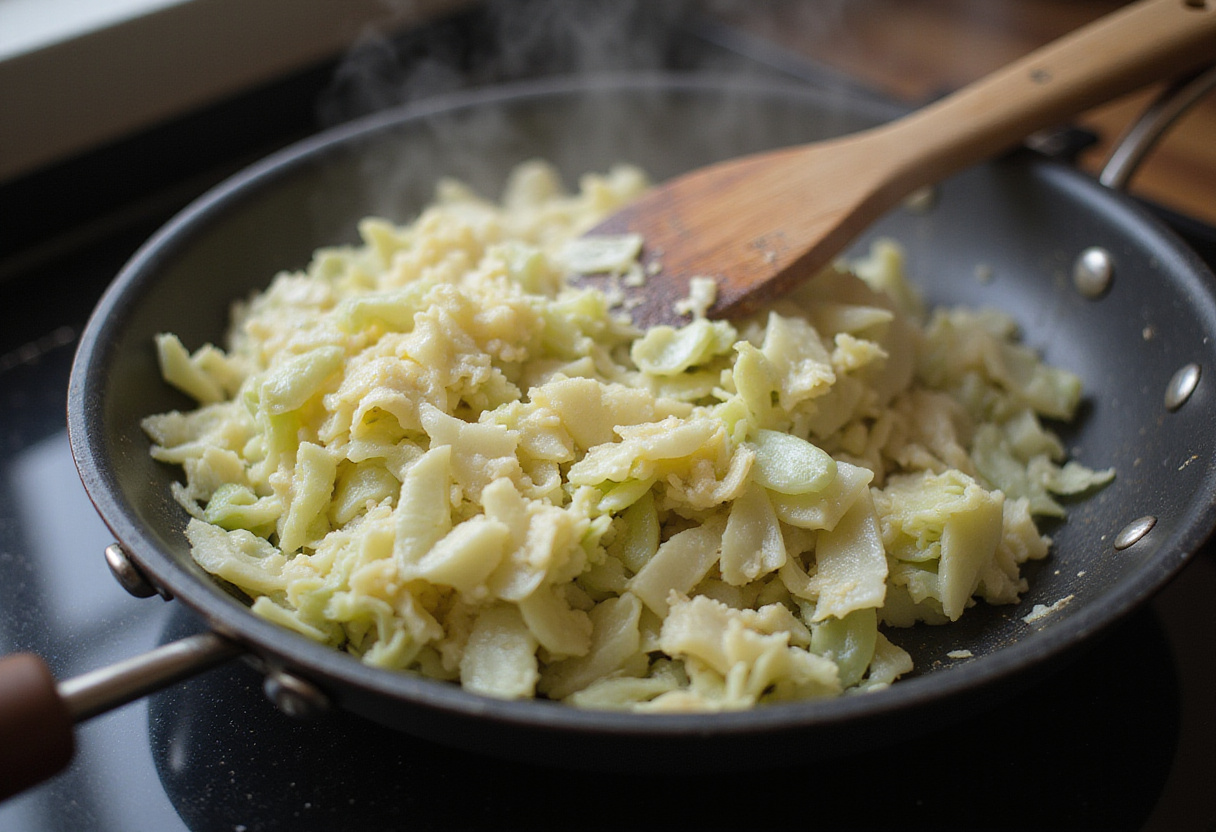
Step 2: Prepare the Dough
In a large mixing bowl, whisk together the flour, yeast, sugar, and salt, ensuring that everything is evenly distributed. In a separate, microwave-safe bowl, gently warm the milk to approximately 110°F (43°C). It’s crucial to avoid overheating the milk, as this can damage the yeast and prevent the dough from rising properly. Add the warmed milk and olive oil to the dry ingredients. Using a wooden spoon or your hands, mix until a shaggy dough begins to form. This homemade cabbage bread journey begins with a basic dough, a blank canvas that will soon be transformed by the addition of our star ingredient. If you’re looking for other baking adventures, why not explore our selection of breakfast and brunch recipes?
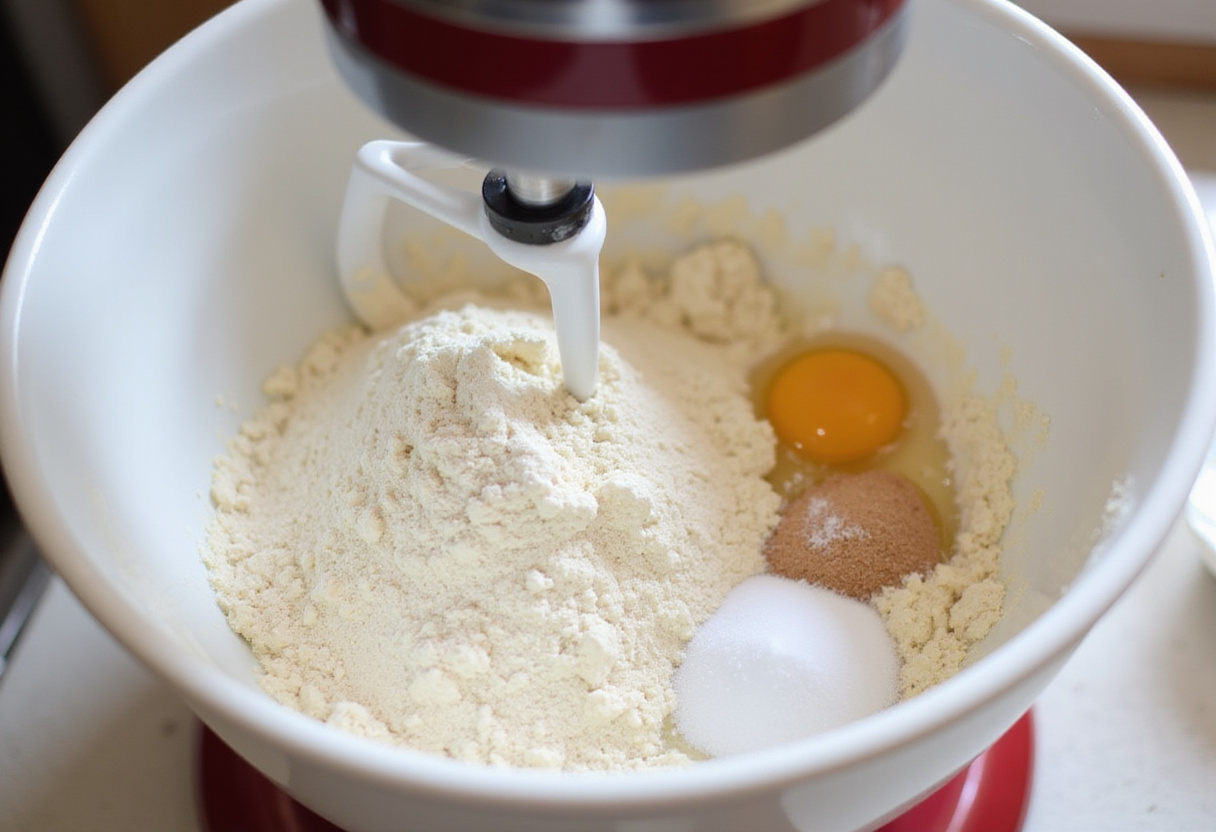
Step 3: Combine and Knead
Now, gently add the sautéed cabbage mixture to the dough, ensuring that it is evenly distributed throughout. Turn the dough out onto a lightly floured surface and begin to knead it for approximately 8-10 minutes, until it transforms into a smooth and elastic dough. As you knead, the gluten in the flour will develop, giving the bread its structure and chewiness. If the dough feels too sticky, gradually add a little more flour, one tablespoon at a time, until it becomes manageable. Once the dough is ready, place it in a lightly greased bowl, turning to coat all sides. Cover the bowl with a clean kitchen towel and place it in a warm, draft-free place to rise for approximately 1-1.5 hours, or until the dough has doubled in size. This rising process is essential for creating a light and airy texture in the finished bread. Incorporating the cabbage at this stage allows its flavors to meld beautifully with the dough, ensuring an even distribution throughout the cabbage bread and creating a truly harmonious flavor profile. Consider making these low carb cabbage bread.

Step 4: Shape and Bake
Preheat your oven to 375°F (190°C). Once the dough has doubled in size, gently punch it down to release the trapped air. Turn it out onto a lightly floured surface and knead it briefly to redistribute the air bubbles. Shape the cabbage bread dough into a loaf and carefully place it on a greased baking sheet. To prevent the crust from drying out during baking, cover the loaf with a clean kitchen towel and let it rest for another 20 minutes. This second resting period allows the dough to relax and rise slightly, resulting in a lighter and more tender crumb. Bake in the preheated oven for 30-35 minutes, or until the loaf is a beautiful golden brown color and sounds hollow when tapped on the bottom. Once baked, carefully remove the cabbage bread from the oven and let it cool completely on a wire rack before slicing and serving. This cooling period is crucial, as slicing the bread while it’s still warm can result in a gummy texture. Patiently waiting for it to cool ensures that you’ll enjoy each slice at its best.
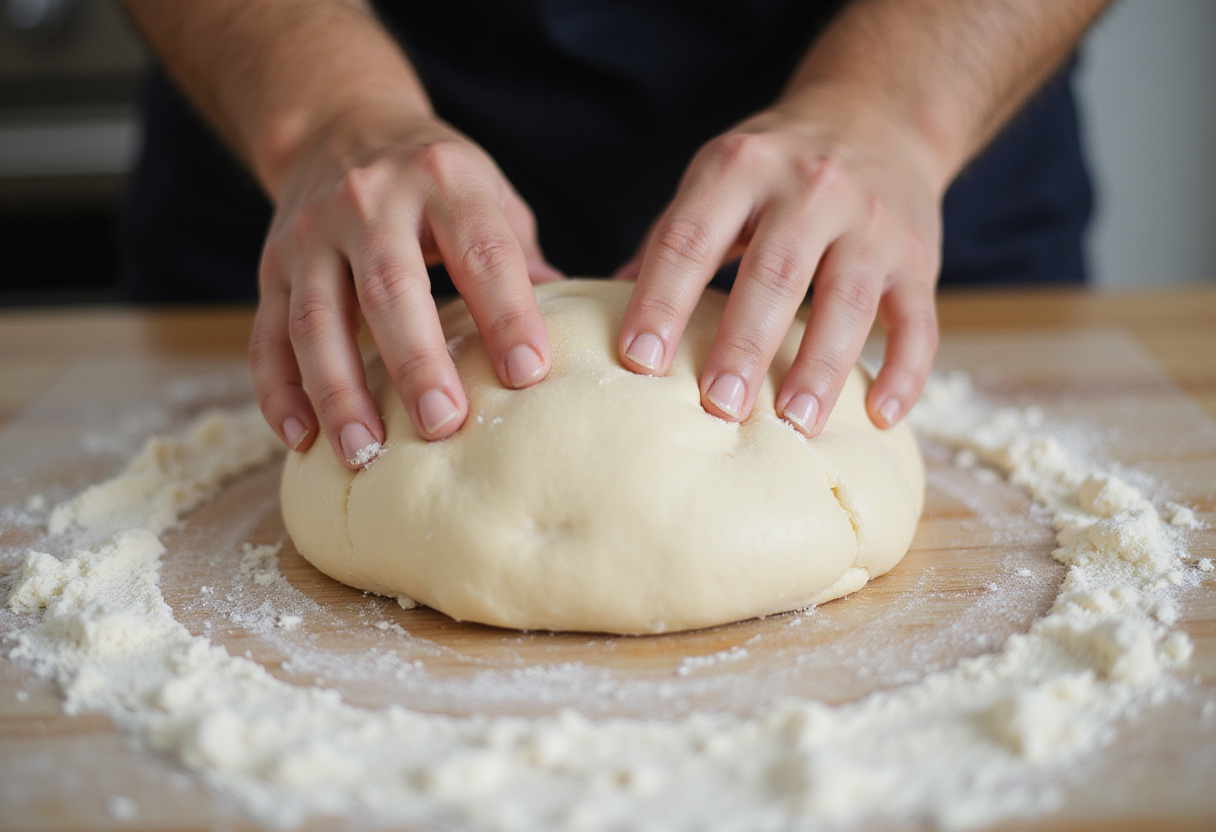
7. Tips for the Perfect Cabbage Bread
- Don’t Overheat the Milk: Remember to ensure that the milk is warm to the touch, not scalding hot, to prevent damaging the yeast and hindering its ability to activate properly.
- Sauté the Cabbage Well: Taking the time to properly caramelize the cabbage in the skillet not only softens its texture but also significantly enhances its natural sweetness and overall flavor profile, contributing to a more delicious final product.
- Knead Thoroughly: Thorough kneading is key to developing the gluten in the dough, resulting in a bread with a more desirable texture and structure. Aim for a smooth and elastic dough that springs back when lightly pressed.
- Let it Rise: Be patient and allow the dough ample time to rise properly. This process is essential for creating a light, airy, and beautifully textured bread. Don’t rush it!
- Cool Completely: It may be tempting to slice into the warm bread immediately, but resist the urge! Allowing the bread to cool completely on a wire rack before slicing helps to prevent it from becoming gummy and ensures that each slice holds its shape perfectly.
8. Variations and Additions
- Cheese: For a delightful twist, try adding shredded cheddar cheese or nutty Swiss cheese directly to the dough, creating a cheesy and savory sensation throughout the bread.
- Herbs: Elevate the flavor profile by mixing in fresh, fragrant herbs such as thyme, rosemary, or dill. These herbs will add a touch of complexity and freshness to the bread.
- Spices: For a more unique and aromatic flavor, consider adding a pinch of caraway seeds or smoked paprika to the dough. These spices will impart a subtle warmth and depth of flavor to the finished bread.
- Bacon: To enhance the savory notes of the bread, incorporate crispy bacon bits into the dough. The smoky, salty flavor of the bacon will complement the sweetness of the cabbage perfectly.
- Sweet Cabbage Bread: Transform this savory bread into a sweeter treat by adding a tablespoon of sugar to the dough and opting for a naturally sweeter variety of cabbage, such as Savoy cabbage. This variation is perfect for those who prefer a touch of sweetness in their baked goods. If you have a sweet tooth, be sure to check out our desserts and sweets category!
9. Conclusion
Congratulations! You’ve successfully created a delicious and utterly unique cabbage bread recipe right in the heart of your own kitchen. This homemade cabbage bread is not only a delightful treat to eat and share with loved ones, but it’s also a fun and rewarding baking experience that is sure to impress. Armed with this recipe, you’re equipped to enhance your breakfast by making the hottest cross buns, and scalloped potatoes for Easter dinner. Enjoy the fruits of your labor with a warm slice, perhaps slathered with butter or paired with your favorite soup, and don’t hesitate to share this delightful recipe with your friends and family. After all, good food is meant to be shared! Happy baking, and may your kitchen always be filled with the inviting aroma of freshly baked bread!
If you have any questions or feedback, feel free to reach out to us on our about page!
Print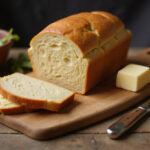
How to Make the Perfect Cabbage Bread Recipe at Home
- Total Time: 1 hour 55 minutes
- Yield: 1 loaf 1x
- Diet: Vegetarian
Description
Learn how to make the perfect cabbage bread at home with this easy and delicious recipe. This unique bread features the subtle sweetness of cabbage, making it a delightful addition to any meal. Perfect for sandwiches, toasts, or simply enjoyed on its own.
Ingredients
- 3 cups all-purpose flour
- 1 packet (2 1/4 teaspoons) active dry yeast
- 1 teaspoon sugar
- 1 teaspoon salt
- 1 cup warm milk (about 110°F)
- 2 tablespoons olive oil
- 2 cups shredded cabbage
- 1/2 cup chopped onion
- 2 cloves garlic, minced
- 1 tablespoon butter
Instructions
- Sauté the cabbage: Melt the butter in a skillet over medium heat, add onion and garlic, and sauté for 5 minutes, then add cabbage and cook until tender and caramelized, about 10-15 minutes.
- Prepare the dough: In a large mixing bowl, combine flour, yeast, sugar, and salt. In a separate bowl, warm the milk to about 110°F; mix into dry ingredients along with olive oil until a shaggy dough forms.
- Combine and knead: Add the sautéed cabbage mixture to the dough and knead for 8-10 minutes until smooth. Place in a greased bowl, cover, and let rise in a warm place for 1-1.5 hours.
- Shape and bake: Preheat oven to 375°F (190°C). Punch down the dough, shape into a loaf, and place on a greased baking sheet. Cover and let rest for 20 minutes, then bake for 30-35 minutes until golden brown.
Notes
- Don’t overheat the milk to avoid killing the yeast.
- Sauté cabbage well to enhance sweetness and flavor.
- Knead thoroughly for a smooth dough.
- Allow dough to rise for a light texture.
- Let the bread cool before slicing to prevent gumminess.
- Prep Time: 20 minutes
- Cook Time: 35 minutes
- Category: Bread
- Method: Baking
- Cuisine: Various
Nutrition
- Serving Size: 1 slice
- Calories: 180 Kcal
- Sugar: 1g
- Sodium: 200mg
- Fat: 5g
- Saturated Fat: 1g
- Unsaturated Fat: 4g
- Trans Fat: 0g
- Carbohydrates: 27g
- Fiber: 2g
- Protein: 5g
- Cholesterol: 0mg



